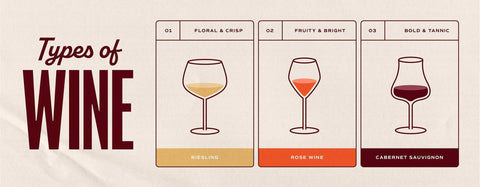Wine Faults and How to Identify Them: An Australian Guide
Understanding wine faults helps you identify problems in wine storage and handling, particularly important in Australia's challenging climate. Whether you're a casual wine drinker or serious collector, knowing how to identify wine faults ensures you get the most from every bottle.
Cork Taint (TCA)
Cork taint, often called "corked wine," remains one of the most common wine faults, even with Australia's widespread adoption of screwcaps. The compound responsible, 2,4,6-trichloroanisole (TCA), develops when natural cork fungi interact with cleaning products.
When you encounter a corked wine, you'll notice:
- A musty aroma reminiscent of wet cardboard
- Subdued fruit flavours
- A dull, lifeless palate
- Sometimes a subtle mouldiness
Even in small amounts, TCA can mask a wine's natural fruit character. While screwcaps have significantly reduced this issue in Australian wines, imported cork-sealed wines may still show this fault.
Heat Damage
Particularly relevant in the Australian climate, heat damage occurs when wines are exposed to high temperatures during storage or transport. This might happen when wine is left in a hot car or stored in non-climate-controlled conditions during our scorching summers.
Heat damaged wine shows several characteristics:
- Cooked or jammy fruit flavours
- Flattened aroma profile
- Browning in white wines
- Premature ageing characteristics
- Pushed-out corks in cork-sealed bottles
- Sticky residue around the closure
Prevention involves proper storage and transport, especially during summer months when temperatures in parked cars can exceed 60°C.
Oxidation
Oxidation occurs when wine is exposed to excessive oxygen. While some oxidation can be beneficial in aged wines, premature or excessive oxidation is considered a fault.
Signs of oxidation include:
- Browning in white wines
- Brick or orange tints in red wines
- Loss of fresh fruit character
- Development of nutty or bruised apple aromas
- Flat, lifeless palate
In Australia's warm climate, oxidation can progress more rapidly than in cooler regions, making proper storage crucial.
Volatile Acidity (VA)
Volatile acidity presents as acetic acid (vinegar) and ethyl acetate (nail polish remover) aromas. While small amounts can add complexity, excessive VA is considered a fault.
Identifying VA:
- Sharp, vinegar-like aromas
- Nail polish remover smell
- Harsh, acidic palate
- Sometimes accompanied by a metallic taste
Reduction
Reduction occurs when wines lack oxygen exposure during winemaking or storage. This fault appears more commonly in screwcap-sealed wines, though proper winemaking techniques can prevent it.
Reduction characteristics include:
- Struck match aromas
- Rubber-like smells
- Rotten egg odours
- Burnt rubber notes
Often, reduction can be resolved by decanting or swirling the wine vigorously.
Brett (Brettanomyces)
This yeast can produce different aromas depending on the strain and conditions. While some consider slight brett character acceptable in certain wines, excessive brett is generally considered a fault.
Brett presents as:
- Band-aid aromas
- Barnyard smells
- Sweaty saddle notes
- Metallic taste
- Dried out palate feel
Secondary Fermentation
Unintended secondary fermentation in bottle can occur, particularly in wines with residual sugar stored in warm conditions.
Signs include:
- Spritz or fizz in still wines
- Cloudy appearance
- Yeasty aromas
- Possible pressure under closures
Storage Conditions and Fault Prevention
The Australian climate presents unique challenges for wine storage. To prevent faults:
Temperature Control:
- Store wines below 20°C
- Avoid temperature fluctuations
- Use climate-controlled storage for valuable wines
- Never leave wine in hot cars
Humidity Management:
- Maintain 65-75% humidity
- Prevent mould growth
- Protect labels and closures
Light Protection:
- Store wines away from direct light
- Use UV-protected glass in cellar designs
- Keep bottles in boxes or cases
Dealing with Faulty Wines
When you encounter a faulty wine:
Return Policy:
- Most Australian retailers accept returns of faulty wines
- Keep your receipt
- Explain the fault clearly
- Understand the difference between faults and personal preference
Professional Assessment:
- Ask for a second opinion if unsure
- Consult wine professionals
- Document the issue with photos if possible
Remember, identifying wine faults is a skill that develops with experience. While some faults are obvious, others require training to detect. Regular tasting and attention to wine characteristics help build this knowledge over time.




Comments (0)
There are no comments for this article. Be the first one to leave a message!